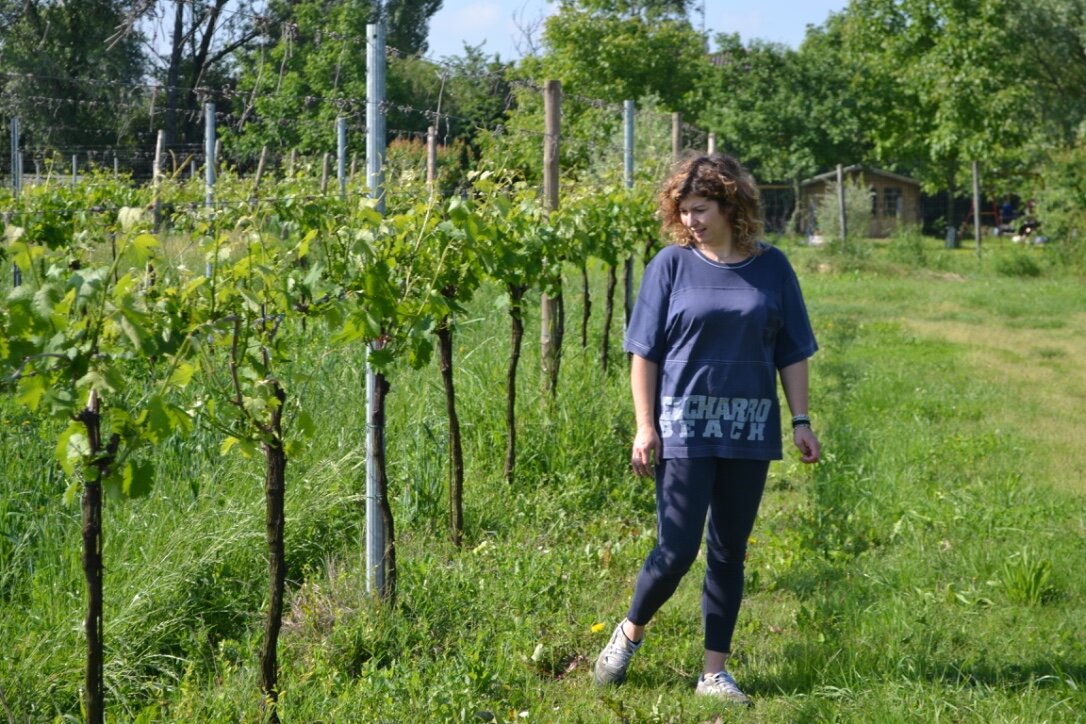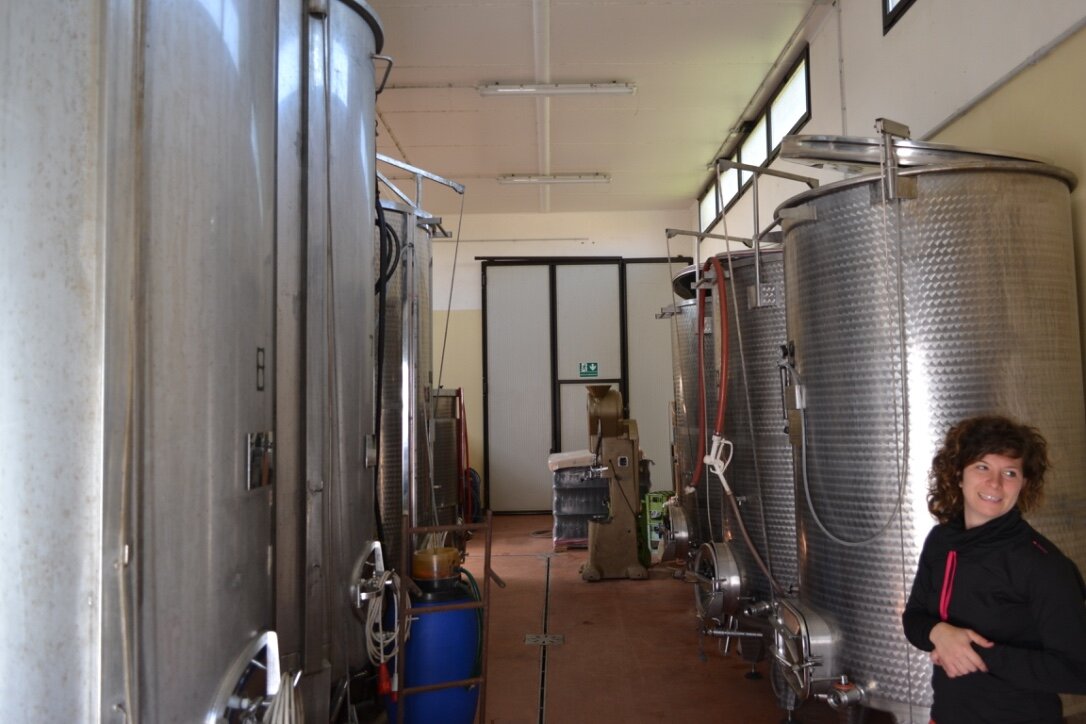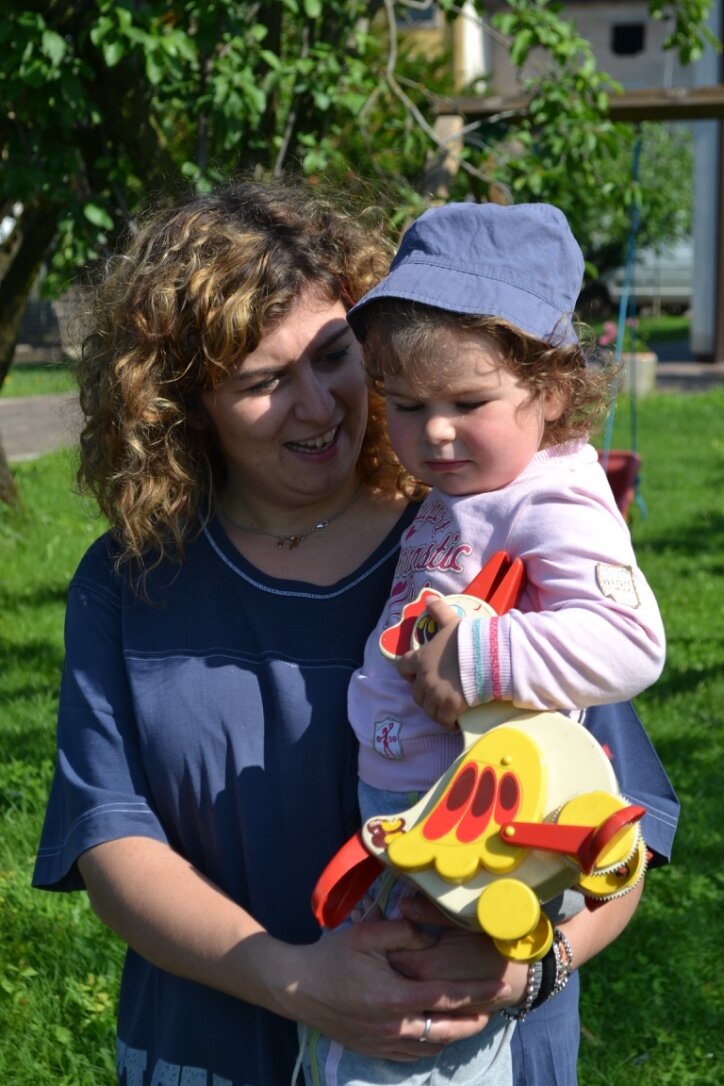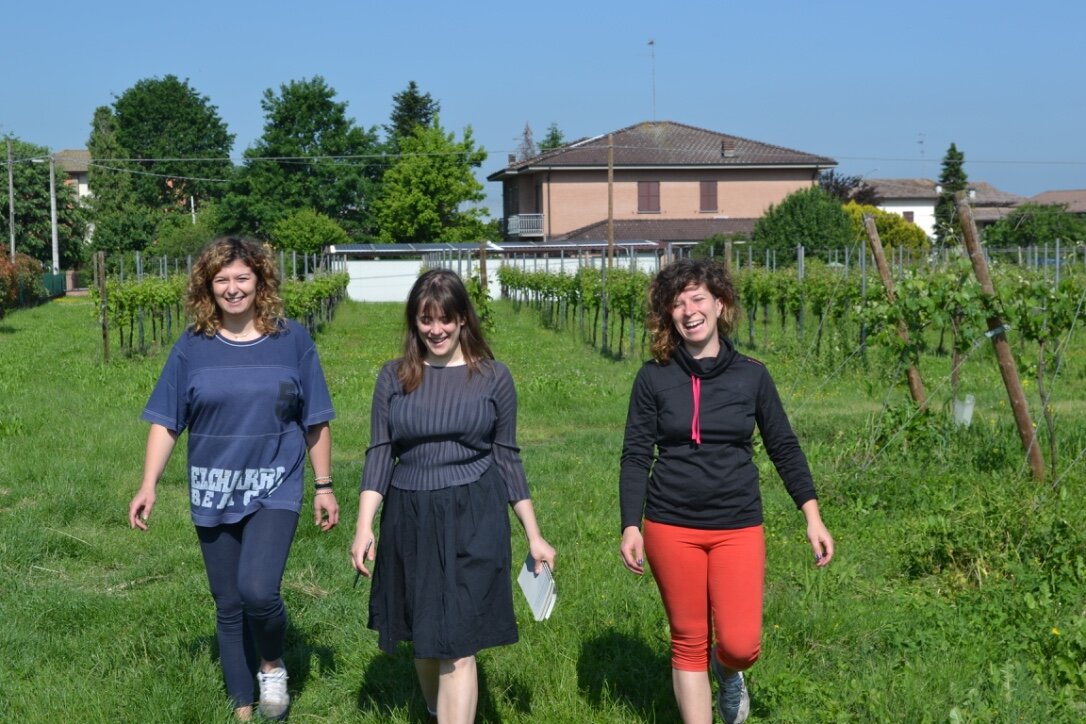Ferretti - Reggio Emilia, Italy
We are thrilled to introduce the Ferretti winery in Emilia! Ferretti is a project of sparkling wines and renewed vineyards run by sisters Elisa and Denise. They are authentic Lambrusco, producing red, white, and rosé wines from over a dozen different grape varieties.
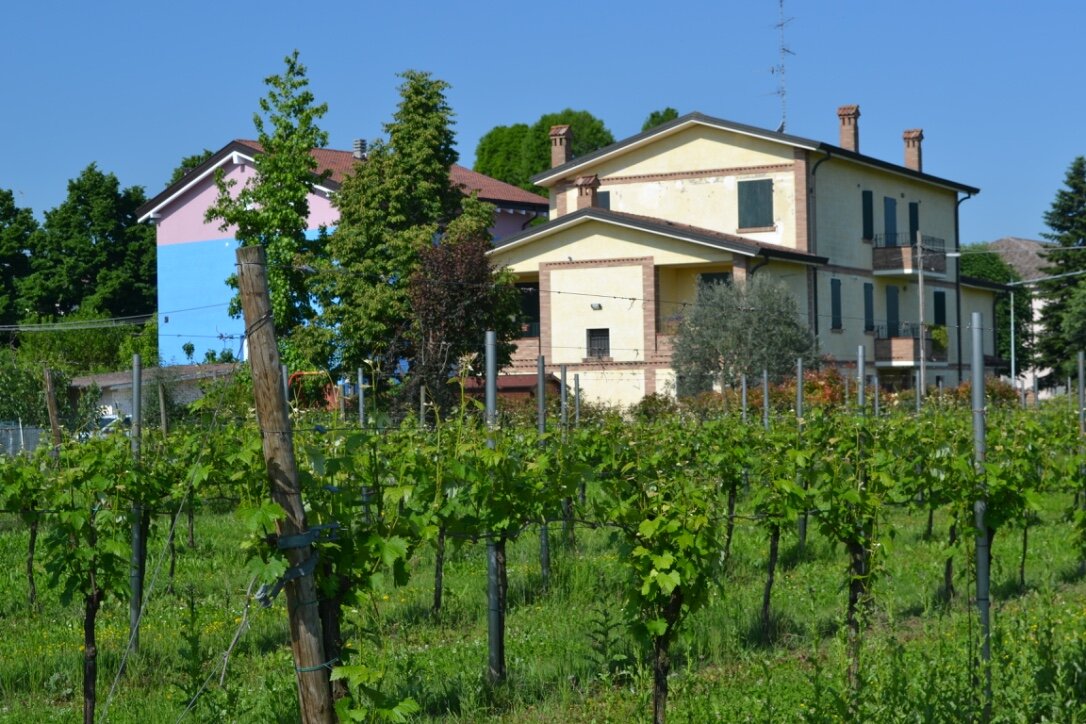
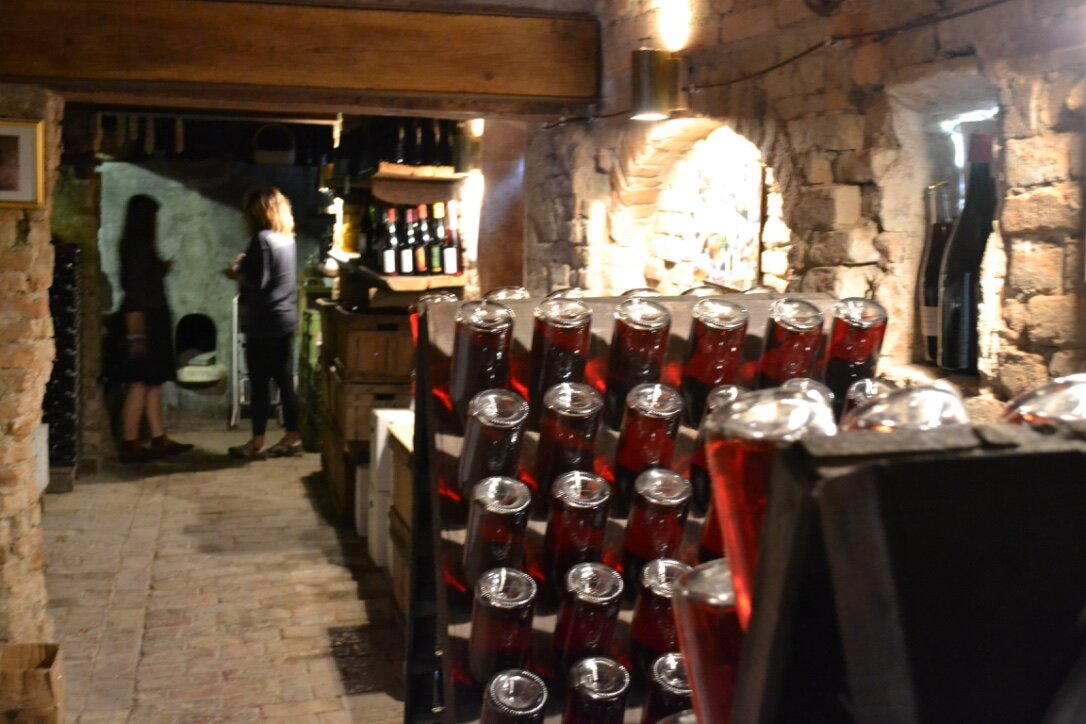
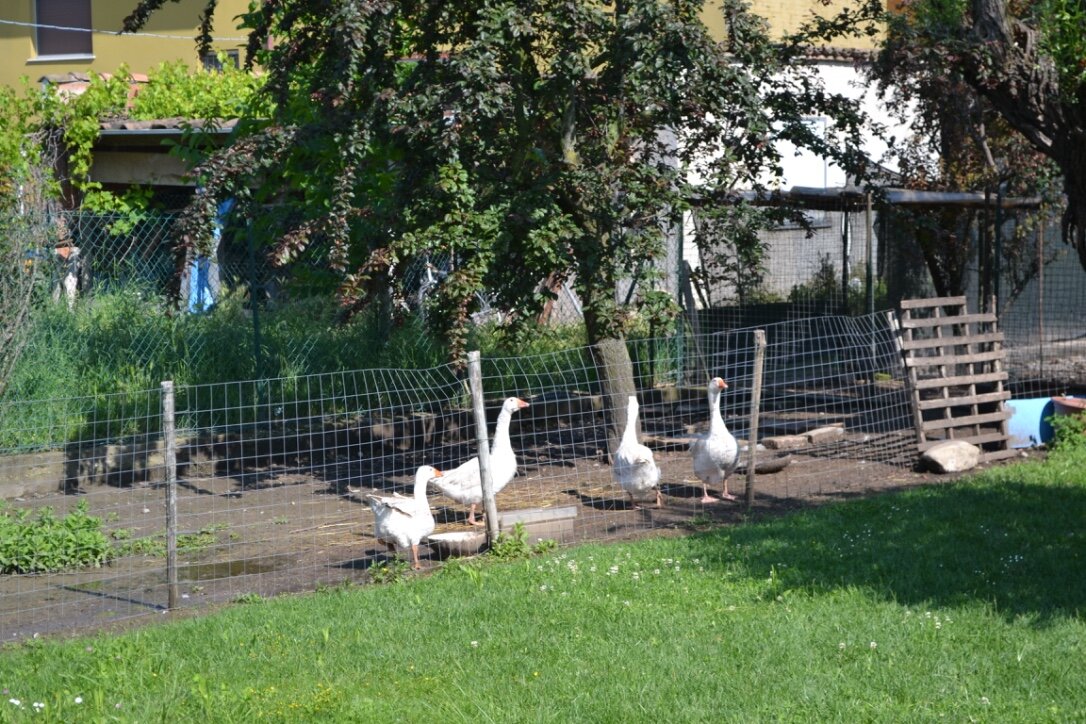
Ferretti Lambrusco is our newest almost-direct imports producer of Lambrusco! We are so happy to offer the wines of this great producer from Reggio-Emilia. Our first visit to the winery was in October of 2018.
We continue to seek out the spectrum of Lambrusco. The best wines coming from this region today are diverse in winemaking style, geography, and grape variety. In the last nine years, team E&R have visited over two dozen wineries in the Emilia-Romagna area in search of great sparkling wine. Mysteriously, the family of lambrusco varieties is always gorgeous with anything on the dinner table as long as they are accompanied by fresh food and a bit of laughter.
We now offer exciting Lambruschi — the regional sparkling wines of Emilia-Romagna — from Modena, Castelvetro, Mantova, and now REGGIO EMILIA. If you’ve tried the wines of Cavaliera, Bergianti, Cantina della Volta, Angol d’Amig, Villa Picta, or Paltrinieri, you’ll be thrilled to continue on with us in our neverending Lambrusco odyssey. With the wines of Ferretti we continue to expand the great availability of great lambrusco in our zone of Oregon.
Elisa at Ferretti told us to go to a pizzeria down the road, where the pizza dough is made with lambrusco — that is, the dough gets its puffy chewy bubbles from the fermentation in the bubbly lambrusco. We never got to go (had to drive to Chianti that afternoon) but it shows that the wine is so embedded in the place that it’s an ingredient in something as fundamental as pizza dough. (Side note, all of the Ferretti wines are perfect with pizza)
Ferretti’s wines are close to the earth and marked by the abundance of the Po river valley. The estate was started by the sisters’ great-grandfather in 1928, but went in and out of their family’s ownership due to economic challenges. However Sante, the father of Elisa and Denise, continued to make wine at the village cooperative even during the periods that the family didn’t own their estate.
older vines on display
Many details of the former generation of winemaking are lovingly preserved, most importantly the older vines, some of which were planted as early as the 1930s. In their region of Reggio-Emilia it is common to have the vineyards planted to a dense mix of blended grape varieties as opposed to other regions of Emilia-Romagna where it is more typical to have plantings of just two varieties in a vineyard. For example, in Modena it is typical to plant sorbara and salamino together. Denise is an enology graduate and is the head of the farming and winemaking efforts. In her care, they have put the health of the land first and foremost. They are farming organically and starting to work with some plant-infusion sprays to heal the vines of some of the disease pressures they face. She is also experimenting with growing the fortana grape, which is often grown to the north of the region.
vines & grasslands too
The Ferretti sisters grow 12+ grape varieties including: the lambrusco varieties fortana, maestri, grasparossa, ancellotta, salamino, marani, bargi, oliva, foglia frastagliata, and newer plantings of the aromatic white varieties malvasia, trebbiano, moscato, and pignoletto. It is traditional in the Reggio-Emilia zone to produce wines with this broad swath of many different grape varieties. The Ferretti sisters are continuing this work by cultivating old vines. The soils in the Case Cocconi region in Campegine where they are located are comprised of sand and clay. The younger vines are pruned in the Simonit & Sirch double guyot method, while some of the other, older vines are pruned in a style similar to the pergolata method. The family is responsible for the care of some 3 hectares of vines, and another 4 on the property are grasslands.
The wines are fermented in the old cement tanks originally installed by the grandfather in the 1920s. Generally speaking the wines are aged on the lees for at least 6 months before being bottled with sweet grape must to feed the yeast of their secondary fermentation. The Ferretti sisters do not fine or filter the wines and add small amounts of sulfur, typically only when the grapes are crushed.
In all of the Ferretti wines there’s a sense of festiveness originating from this family and this place. The good times beget the wines and the wines beget good times. The sisters feel very lucky to be able to reinvigorate their family’s work at the vineyards, with smiles the size of their faces. At the winery (which is also their home), there is a sense of re-beginning the viticultural work that the previous generation had to pause when financial crises averted the ownership of the farm. They are most focused on growing healthy organic fruit in order to have the best raw material to go into their unfussed-with wines.
Click each wine for more detail.
Ferretti Vini Bianco dell'Emilia IGT Stropel Bianco
The Stropel bianco is a metodo ancestrale (pet-nat style) white wine from a blend of malvasia, moscato, trebbiano, and pignoletto. The word ‘Stropel’ is a reference to the flexible branch motion of the vines. The two M’s, Malvasia and moscato bring aromatic verve to the richer Emilian standby Pignoletto. The Ferretti sisters keep the grapes on the skins for 4 hours after harvesting to get a touch of olive-like tannin in the mix of this golden elixir of the Emilian Firmament. The grapes are crushed separately then blended together. It is aged in concrete and stainless tanks on lees for 9 months, then refermented in bottle with a small addition of grape must. The wine is limey and playful, while finishing with a chalkiness that invites salty and rich foods. Everyday since May of 2019 one taster remembered this wine served alongside an olive oil-soaked & crunchy spinach tart made by the sisters Ferretti — a dear with salty tangy crunchy things and olive-oiley greens. $25
Ferretti Vini Lambrusco dell'Emilia IGT Caveriol Ros Metodo Ancestrale 2019
Caveriol ros is an enigmatic sparkling red wine from the older grape vines on the Ferretti property. This is the lambrusco we keep making trips to Italy to bring back: earth-adjacent, rustic, magic, everyday. It’s deep purple in the glass from four to five days of skin contact. It tastes like a Very Ripe Plum soaked in soy sauce and balsamic vinegar (which, no surprise, a small section of the grapes in this come from ancellotta, a grape variety famous for its use in balsamic vinegar, the true sappy aged stuff). Caveriol is a reference to the curl of the the end of the vine. The wine is made from an older section of vines 50+ yeards old, but are roughly comprised of 25% lambrusco di salamino, 25% lambrusco maestri, 20% lambrusco di grasparossa, 20% lambrusco marani, and 10% ancellotta.
The wine is the most complex of the bunch but still easy to drink. Why are we convinced we must drink lambruschi young? Sock three bottles of it away and drink in 2 years, it will be a reward. Natural fermentation indigenous yeasts in concrete tanks. Metodo classico — as in wine bottled with with fresh juice to referment in bottle, aged on the lees for 9 months. Like talking to someone with cinnamon breath. Have it with many tomato items. $25
Ferretti Vini Lambrusco dell'Emilia IGT Al Cer 2019
Al Cer is a blend of MANY grape varieties, super exuberant, lighter-red colored Lambrusco Salamino 25%, Maestri 20%, Grasparossa 15%, Marani 10%, Oliva 8%, Barghi 5%, Foglia frastagliata 2%, Ancellotta 15%. These grapes are pressed on the skins for only 8 hours to get a small amount of color and tannin from the skins. Naturally fermented and refermented in bottle. Aged on lees for 9 months and 20 months on the lees before disgorgement. Shirley Temple sour red cherry color red. Ferretti sisters suggest with fried gnocchi and E&R also suggests roasted chiles. Very small quantities of sulfur added to carry through the sense of this massale-planted vineyard in Reggio Emilia. $21
Ferretti Vini Lambrusco dell'Emilia IGT Al Scur 2019
Al Scur is a red sparkling wine made from a blend of 25% Lambrusco Salamino, 20% Maestri, 15% Grasparossa, 10% Marani, 8% Oliva, 5% Barghi, 2% Foglia frastagliata, and 15% Ancellotta. Same varieties as the Al Cer, just fermented on the skins for 4 days vs 8 hours — much darker color, extraction. Same dry cherry fruit but with savory herbs and clay-like power on the palate. Dry and generous, native yeast, unfiltered. Very small quantities of sulfur added to carry through the sense of this massale-planted vineyard in Reggio Emilia. $21
(LB)


